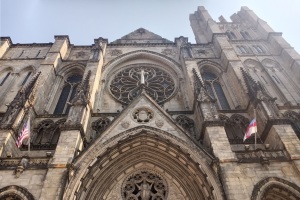India Still in Critical Condition One Month After Historic Flood
Last month, Western India faced witnessed flood water levels reaching 37'' within a 24 hour period. The result of the flood include the deaths of at least 1099 people, and the destruction of 248,000 homes in over 6,000 villages.
Last month, Western India faced witnessed flood water levels reaching 37" within a 24 hour period. The result of the flood include the deaths of at least 1099 people, and the destruction of 248,000 homes in over 6,000 villages.
Christian organizations including the Salvation Army, Catholic Relief Services, and World Vision are providing ongoing support to the victims in India despite the fact flood waters have receded.
The major concern for the relief organizations in the aftermath is disease control.
"People are still living in unhygienic conditions, with water mixing with sewage and overflowing into the slums," said World Vision Mumbai Program Manager Biju.
World Vision is currently working with local agencies to organize 19 health camps. These agencies include Bombay Municipal Corporation and KEM Hospital. It is estimated that the 19 health camps will be able to care for 1500 families in the area.
Alex Matthew, Catholic Relief Services (CRS) deputy country representative for South India, is concerned about the tribal communities and the poor rural victims of the flood.
Matthew says, “We want to make sure these invisible families are not being left off the list.”
These invisible families include the poor villagers who have lost their homes, possessions, and livelihood as a result of the flood and landslide. The majority is uneducated (96 pereent are illiterate in the region of Mahas) and have no money saved up, often times working as laborers or fishermen.
Father Carlton Kinny, Jakalyan Trust Director and partner with CRS in Mahas, expresses his concern for the poor villagers, “the tribal communities are at this moment a totally lost group. They have no voice here. They are the most neglected within society, always shut out from the mainstream, from education, and exploited at all facets of life. Their needs in emergencies like these are critical. We must look out for them.”
The Salvation Army is continuing to distribute food along with Catholic Relief Services in Western India. Additional ongoing relief efforts include building temporary shelter, providing sanitation items, and offering cash for work in restoring the land among others.
Long term relief plans include building permanent housing, providing education and material for the children, reestablishing employment among other programs.




























